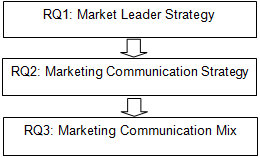THESIS: The Marketing Communication Strategy of Blue Bird Taxi To Maintain Market Leader Position After Using The Highest Tariff:
- Introduction & Book Cover : Part 1
- Research Originality Statement and Acknowledgement : Part 2
- Abstract : Part 3
- Table of Contents : Part 4
- List of Tables : Part 4A
- Chapter I : part 5, part 6, part 7
- Chapter II : part 8, part 9, part 10, part 11, part 12, part 13, part 14, part 15, part 16, part 17, part 18,
- Chapter III : part 19, part 20, part 21
- Chapter IV : part 22
--------------------------------------------------------------------
CHAPTER IV
RESEARCH ANALYSIS
After discussing
the methodology of the research, in this chapter the author will discuss the
result of the research and analyze its findings of the marketing communication
strategy used by Blue Bird Taxi to maintain market leader position after using
the highest tariff.
4.1 Blue Bird Group Company
Profile
Figure 4.1
Blue Bird Group Logo
Source:
http://www.bluebirdgroup.com
Blue Bird Group (BBG) is a ground transportation company in Indonesia established
in 1972. They are the leading company in regular taxi services (Blue
Bird and Pusaka). Other various transport services that they offer are executive taxis that
are targeted for middle to upper markets
(Silver Bird), car rental (Golden Bird),
bus rental (Big Bird)
and container trucks
(Iron Bird). With
the motto "the
reliable transportation partner",
Blue Bird is
known for high standards in
serving the passenger taxis. Blue Bird Group
serves an average of three million passengers
per month throughout
Indonesia and controls
around 55% market share.
Blue Bird Group is supported by more
than 20,000 employees, the latest
technology such as GPS, MDT, SAP, and a computerized ordering
system. With a combined fleet of approximately 21,000 vehicles in 17 branches, the Blue Bird
Group's services are
available in many cities of Indonesia including
Jakarta, Bali, Bandung, Banten, Manado, Medan, Lombok, Semarang, Surabaya and
Yogyakarta. In addition, their services
can also be found
in the central business
and tourist destinations throughout
the country.
4.1.1 Blue Bird Group Vision and Mission
Blue Bird
Group vision is “to be a sustainable, quality-driven company
that ensures the continuing prosperity of all its stakeholders.”
Blue Bird Group
mission statement is “our goals are to achieve customer
satisfaction, and to build and defend the first position as market leader in
every category in which we compete. In land transportation, we provide
reliable, high quality and superior services with the efficient use of
resources, and we do it as a team.’
4.1.2 Blue Bird Group Regular Taxis Service
Figure 4.2
Blue Bird Taxi & Pusaka Taxi Logo
Source:
http://www.bluebirdgroup.com
This research will focus on Blue Bird Group (BBG) regular taxi services which have 2
brands of taxi, Blue Bird taxi and Pusaka Taxi as seen in Graphics 4.2. Blue
Bird taxis has a light blue color car, and Pusaka taxis have a dark blue color
car as seen in Graphics 4.3.
Figure 4.3
Blue Bird Taxi & Pusaka Taxi
Source:
Blue Bird Internal Video
Other taxis
under the Blue Bird Group flagships include Morante Jaya, Cendrawasih, Pusaka
Nuri, Pusaka Biru, Pusaka Lintas, Pusaka Satria, Pusaka Sentra, Pusaka Banten,
Pusaka Prima, Surabaya Taksi, Bali Taksi and Lombok Taksi. BBG
expansion of the armada is to fulfill a
large demand of taxi services and the subsidiary
companies is due to government regulations imposing limits on the number
of vehicles allowed to operate under a certain privately owned company
In 2010, BBG taxi armada has combined fleet of 15.680 taxis all over Indonesia and approximately 11.000 taxis in
Jakarta area. BBG has 28 Pools scattered throughout Jakarta, Bali,
Bandung, Banten, Manado, Medan, Lombok, Semarang, Surabaya and Yogyakarta. Their
strategic placement of taxi outlets is to allow easy access in and out of major
business and commercial districts. These also include tourist hot spots and
national and international airports around the country.
BBG
taxis are known for their trusted drivers, utilizing the latest technology
including computerized reservation system and GPS tracking; well-maintained
fleet, lost-and-found services, easy to get fleet and easy payment options.
4.1.3 Blue Bird Group Corporate Image Department
Blue Bird Group is a family owned company which was founded by
the late Mrs. Mutiara Djokosoetono, SH and
is now led by her son Dr. H. Purnomo Prawiro as
the President Director. The company’s management consists of nine departments
which are managed by a Vice President and 17 pool depots or
branch offices managed by a General
Manager. The 9 departments of BBG are Business and
Development, Audit, Central Operations, Sales
& Marketing, Regulatory
Affairs, Finance &
Administration, Technical, Human Resources, Operations
and 17 pool
depots.
The BBG Corporate Image division, whom is
responsible for communication of the company, is under the management of
Business Development Department. The Corporate Image division is manage by the Corporate
Image Manager and divided into the Creative team, Marketing Communication staff
and the Public Relations team as seen in table 4.1.
Figure 4.4
BBG Corporate Image Division Management Hierarchy
Source:
Blue Bird Interview




